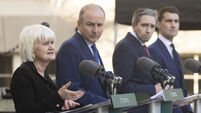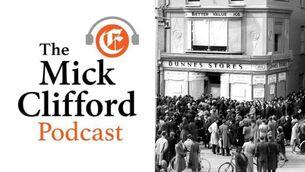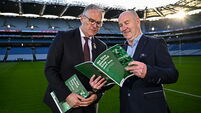Keeping it country
Every weekend in halls and hotels, thousands of people go to country-music gigs. Country in Ireland is a broad church, encompassing bluegrass, Irish and American country and middle-of-the-road acts like Daniel O’Donnell. But how is country music surviving the downturn and who are the main players?
Mike Commins writes on country music for the Farmer’s Journal and Mayo News and presents a country show on Mid-West Radio. He says that, unlike its American equivalent, Irish country music must be suitable for dancing and it is this that draws the audiences, week after week.
“At the simplest level, you have a two-person unit which caters for ‘social dancing’, which you can find around the country often on Sunday afternoons,” he says. “This can be a very lucrative part of the market — I know of one duo that is solidly booked up for the next two years.”
For the bigger, five- or six-piece groups, who spend their lives on the road, it is larger venues with a few hundred clients that provide the bread-and-butter of the business. Although the songs may echo American themes of loss, death, love and heartache, they need to have a tempo to keep the dancers happy.
“There have been some great Irish songwriters who would have you crying in your beer, but a band won’t get away with too many slow American-type ballads,” Commins says. “The music generally has to have a fast dancing tempo or the crowd get restless.”
The biggest draw is Mike Denver, who has also recorded ten albums. “We do about 250 gigs a year and have ten guys on the road,” he says. “The great thing about country music is that it tells a story and that is a big part of its appeal. If you added up all the different gigs around the country, there are more people going out to listen to country than to any other genre.”
The grandfather of it all is Big Tom, the popular star from Monaghan who has been on the road since 1966. “No one can play a gig within 30 miles of Big Tom. Even at 74 and semi-retired he would clean them out completely,” says Commins.
“This can be a bitchy business at times, but no one has a bad word to say about him. He is absolutely revered and can pull in crowds of 2,000 from all over the country.
“Someone once said that Johnny Cash’s image should be carved into Mount Rushmore — following that logic, Big Tom’s image should probably be carved into an Irish hill somewhere in Monaghan.”
Once an artist has reached a certain level of popularity, other avenues begin to open up. Robert Mizzell, Jimmy Buckley and Patrick Feeny, who are all successful in their own right, tour as The Three Amigos, and other artists also play concerts in winter when the dance circuit is quiet.
Ryan Tubridy’s stewardship of the Late Late Show has also helped as he has invited a number of country acts onto the show.
Another profitable market that has appeared in recent years is the participatory trips abroad, where Irish country music fans follow their favourite stars to exotic locations.
Mizzell will bring 100 Irish fans back to his native Louisiana with him in October, and about 500 fans see Denver perform in Portugal every May and September. Every second year, Denver also brings a crowd to Nashville.
Although the concept has been widely adapted, it was originally the brainchild of Gerry Flynn, from Enjoy Travel. “A friend asked me if I could organise a set-dancing weekend in Ireland,” he says. “About 30 of us came over from Britain and it was a huge success, except for the weather. This sparked the idea of running these weekends in warmer locations.”
Since then, Flynn has organised trips to a range of locations including Australia, America and even Fiji. Perhaps the most popular of these, combining two words which conjure up different images, is Fleadh Ibiza. “Set dancing is not to everyone’s taste, so we have broadened it out to include country music and social dancing,” says Flynn. “At Fleadh Ibiza, the age group is generally from early 40s to late 90s and they are as fit as butcher’s dogs. It is hard to get them off the dance floor. It is so popular that we need to book out the entire resort exclusively. In 2007 we peaked at 2,400 people.”
A ten-day, foot-stompin’ package to Ibiza costs from €1,035.
Although the industry is driven by live music, Irish country artists have recorded in Nashville and sometimes with the big American stars that periodically visit these shores.
No Irish artist has cracked the hardcore American country market and indeed many view Australia as more lucrative. One of the Irish artists who came close was Sandy Kelly, who recorded with, and befriended, Johnny Cash.
Due primarily to a bad contract and subsequent court case, Kelly’s US adventure came to a premature end.
“Nashville is very good at what it does, and for Irish artists going there it is like trying to sell sand to the Arabs,” says Kelly. “You would need a very expensive advertising campaign just to get started. It is very tough.”
So what will happen to country music when its current audience hangs up their dancing shoes? Interestingly, there seems to be a resurgence of interest from a much younger age group, particularly in the North, which has always been a stronghold for country music.
“I think that Johnny Cash had a huge impact,” Kelly says. “His cover of the Nine Inch Nails song, Hurt, was so dramatic it crossed the age divide and made country cool.
“Walk the Line continued the process. Although the dance circuit has always been at the heart of Irish country, it is great to see that there are younger guys playing in small clubs and pubs who focus on bluegrass music. A mixture of more authentic bluegrass and commercial country would be a great development.”
















